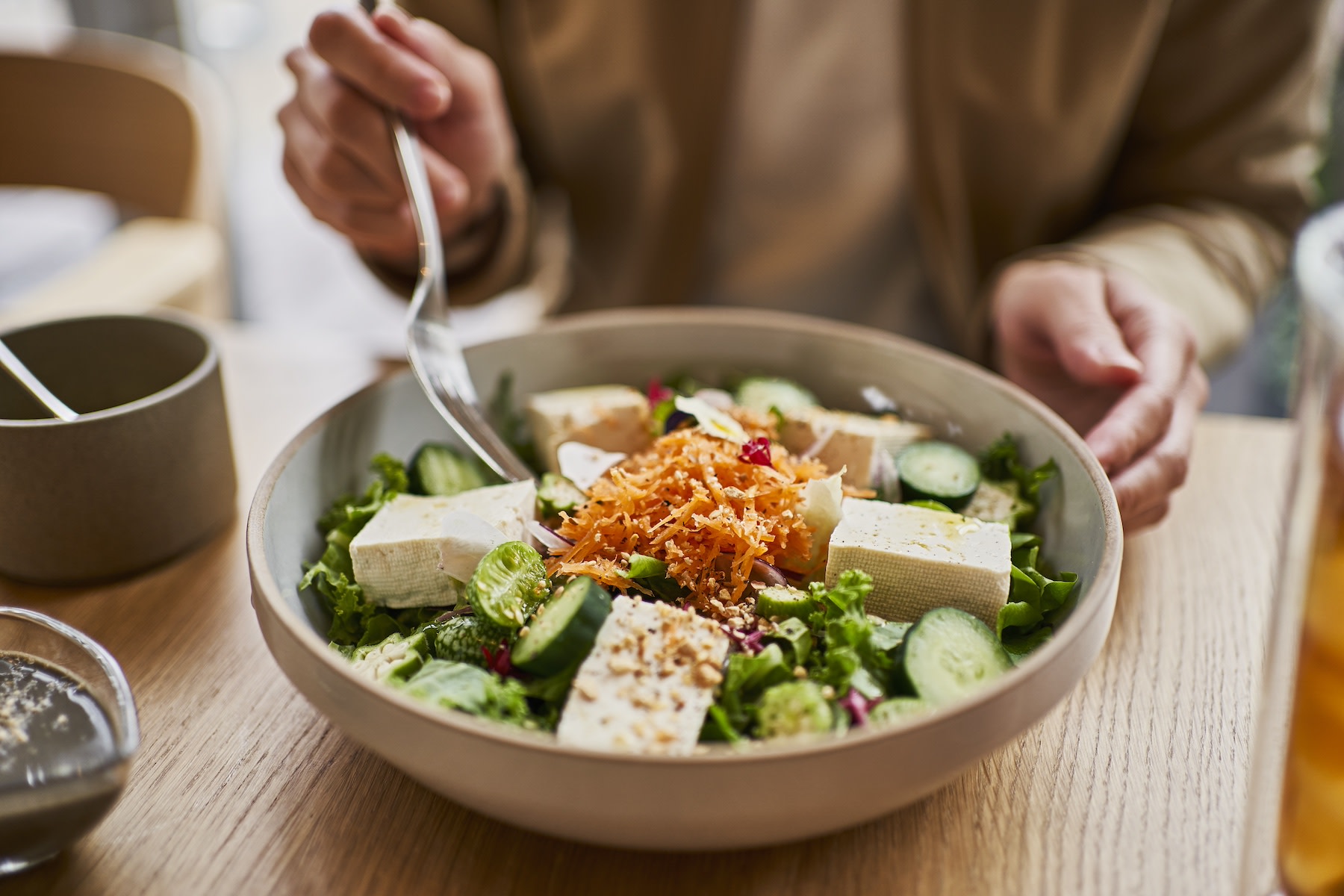
Yagi Studio / DigitalVision via Getty Images
10 Satisfying Lean Protein Foods to Fuel Your Body and Promote Heart Health
These foods pack in protein with minimal saturated fat.
By Jihan Myers•
Chances are good you know plenty about protein, a powerhouse macronutrient that’s vital to nearly every function in the body, from building and repairing tissues to supporting your immune system. But you might not be as familiar with lean protein specifically.
Compared to other protein sources, lean-protein foods are lower in fat, particularly saturated fat, and cholesterol—both of which can be bad for heart health when consumed in excess.
But what counts as a lean protein, and how can you add more of it to your everyday diet? We asked dietitians to share their favorite lean-protein sources that bring great-tasting variety (and ample benefits for your well-being) to every meal.
What Is Lean Protein?
When a food is defined as a “lean protein,” that generally means it’s a protein source with minimal fat content. “Often this includes lower-fat cuts of meat, skinless poultry, lower-fat dairy products, and plant protein,” says registered dietitian nutritionist Courtney Pelitera, RDN. “These protein sources are also going to be lower in calories than their less-lean counterparts.”
According to the US Department of Agriculture (USDA), most Americans eat enough protein, but “need to select leaner varieties of meat and poultry.” Leaner cuts of meat tend to be higher in nutrients (like vitamin D and dietary fiber) with less sodium, compared to fattier protein sources that usually have more saturated fat. More specifically, in order for a 3.5-ounce cut of beef to be considered lean by the USDA, it must contain:
Less than 10 grams of fat
4.5 grams or less of saturated fat
Less than 95 milligrams of cholesterol
To be considered extra-lean, that same cut of beef must have:
Less than 5 grams of fat
Less than 2 grams of saturated fat
Less than 95 milligrams of cholesterol
With that in mind, it’s important to remember that higher-fat protein sources can absolutely have a place in your meal rotation. But if, for instance, you’re trying to reduce your consumption of cholesterol or saturated fats, adding lean-protein foods to your plate could help.
10 Lean-Protein Food Sources
When it comes to lean protein, there’s no shortage of options. Here are 10 dietitian-loved lean-protein sources to keep in rotation for meal time:
1. Lean Beef Tenderloin
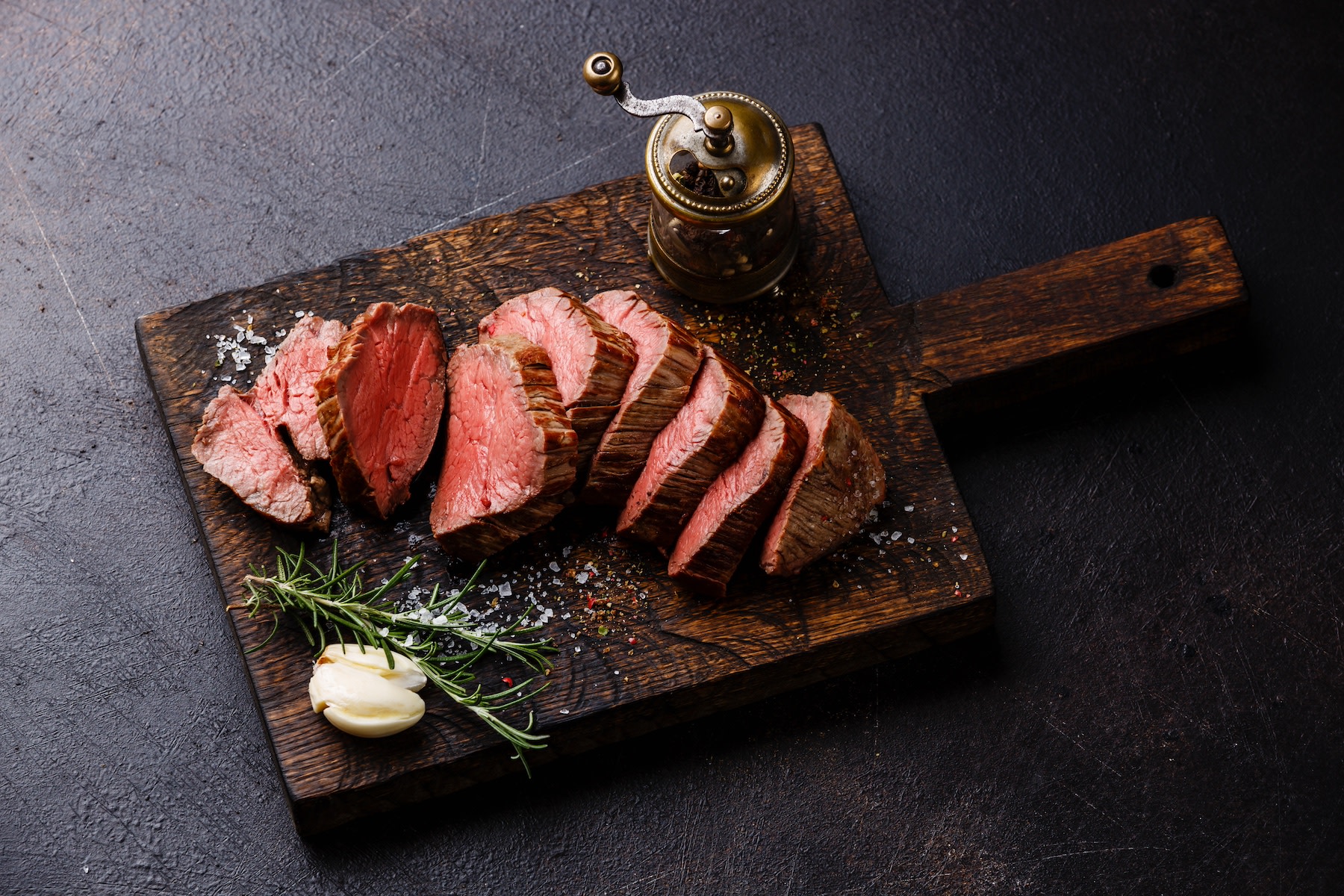
Lisovskaya / iStock / Getty Images Plus via Getty Images
Nutrition Facts (per 100 grams):
Protein: 27.7 grams
Total Fat: 5.56 grams
Saturated Fat: 2.47 grams
Cholesterol: 85 milligrams
Remember, for a 100-gram or 3.5-ounce cut of beef to be considered a lean protein, it needs to have less than 10 grams of fat, 4.5 grams or less of saturated fat, and less than 95 milligrams of cholesterol—and lean beef tenderloin checks all the boxes.
And while a lean, juicy tenderloin is a great pick, it’s hardly your only option. According to the USDA, other lean beef cuts include:
Round steaks and roasts (top round, bottom round, eye of round, and round tip)
Chuck shoulder and arm roasts
Top loin and top sirloin steak
2. Tilapia
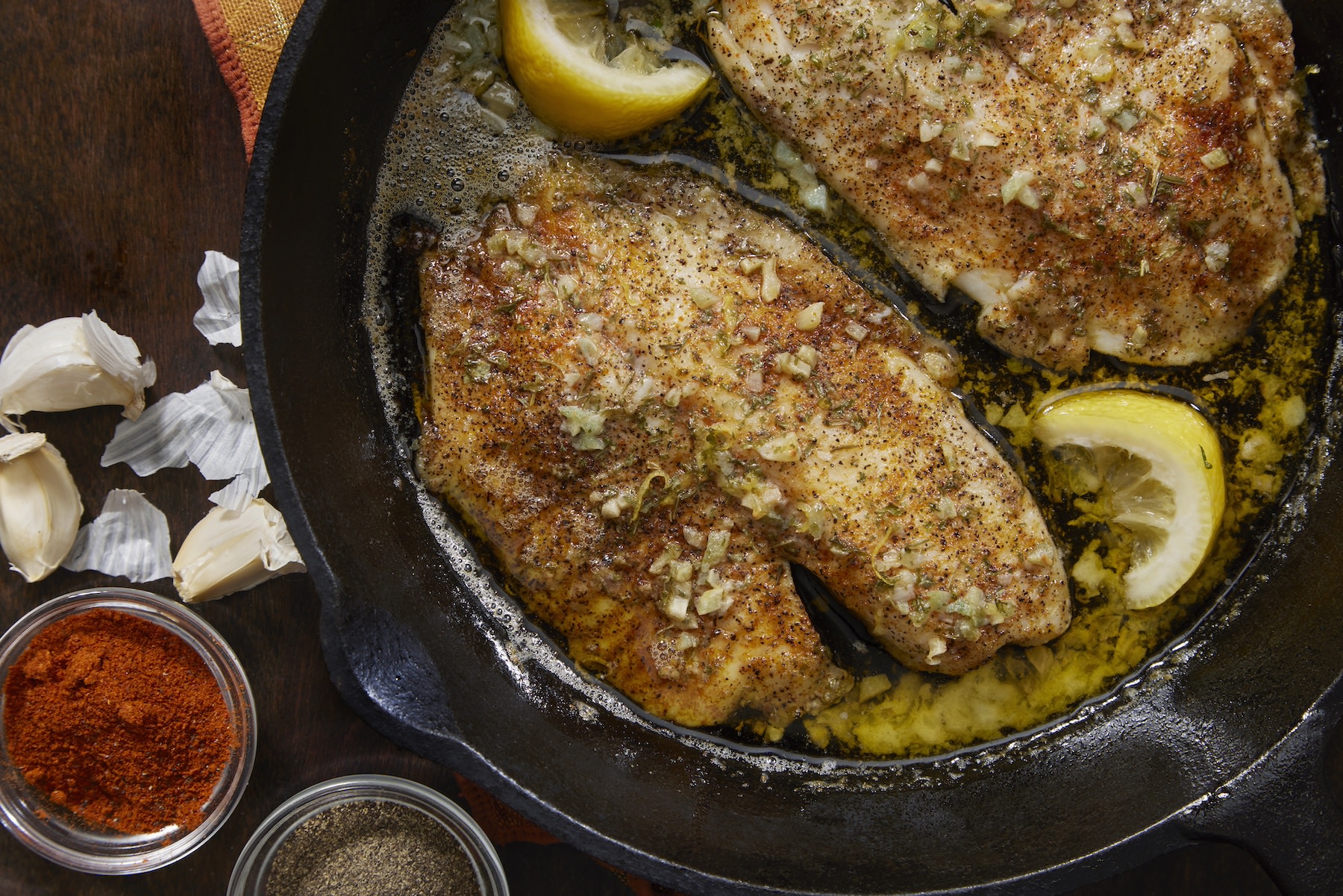
LauriPatterson / E+ via Getty Images
Nutrition Facts (per 100g):
Protein: 26.2 grams
Total Fat: 2.65 grams
Saturated Fat: 0.94 grams
Cholesterol: 57 milligrams
“Baked white fish is basically pure protein,” Pelitera says. “It is very low fat with no carbohydrates. Eating this with rice and vegetables really completes the meal.”
Tilapia is one great example of a lean-protein white fish, but there are plenty of other picks to try, too, such as:
Cod
Halibut
Grouper
Flounder
Snapper
Haddock
Catfish
3. Boneless, Skinless Chicken Breasts
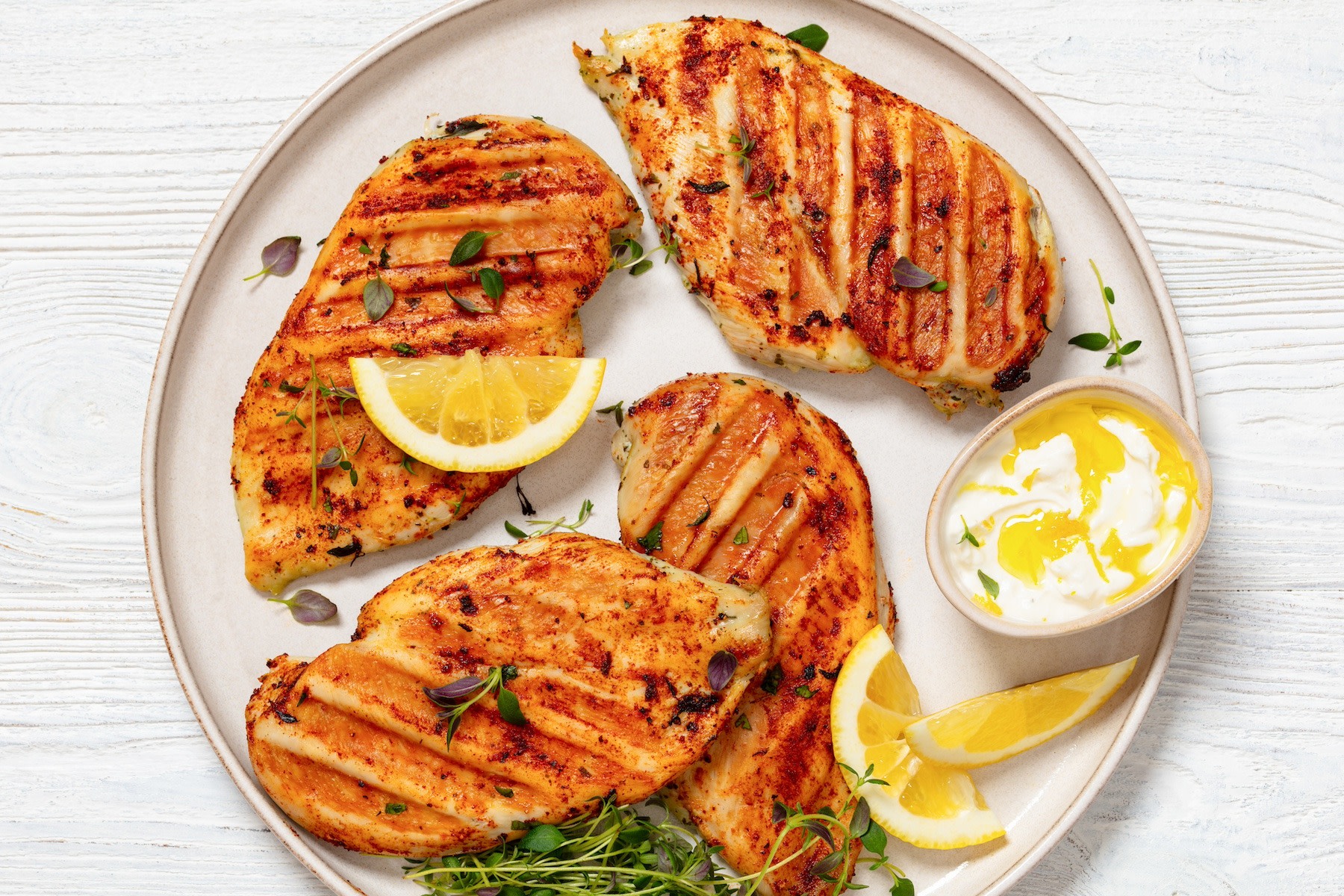
from_my_point_of_view / iStock / Getty Images Plus via Getty Images
Nutrition Facts (per 100 grams):
Protein: 22.5 grams
Total Fat: 1.93 grams
Saturated Fat: 0.35 grams
Cholesterol: 73 milligrams
Ah, the old standby. When it comes to chicken, boneless skinless chicken breasts are your best bet for a nutritionally dense protein source that can be used in tons of different recipes, depending on what you’re in the mood for. From topping a salad to filling a wrap, keeping chicken breasts on hand can make meal prep easy.
4. Pork Tenderloin
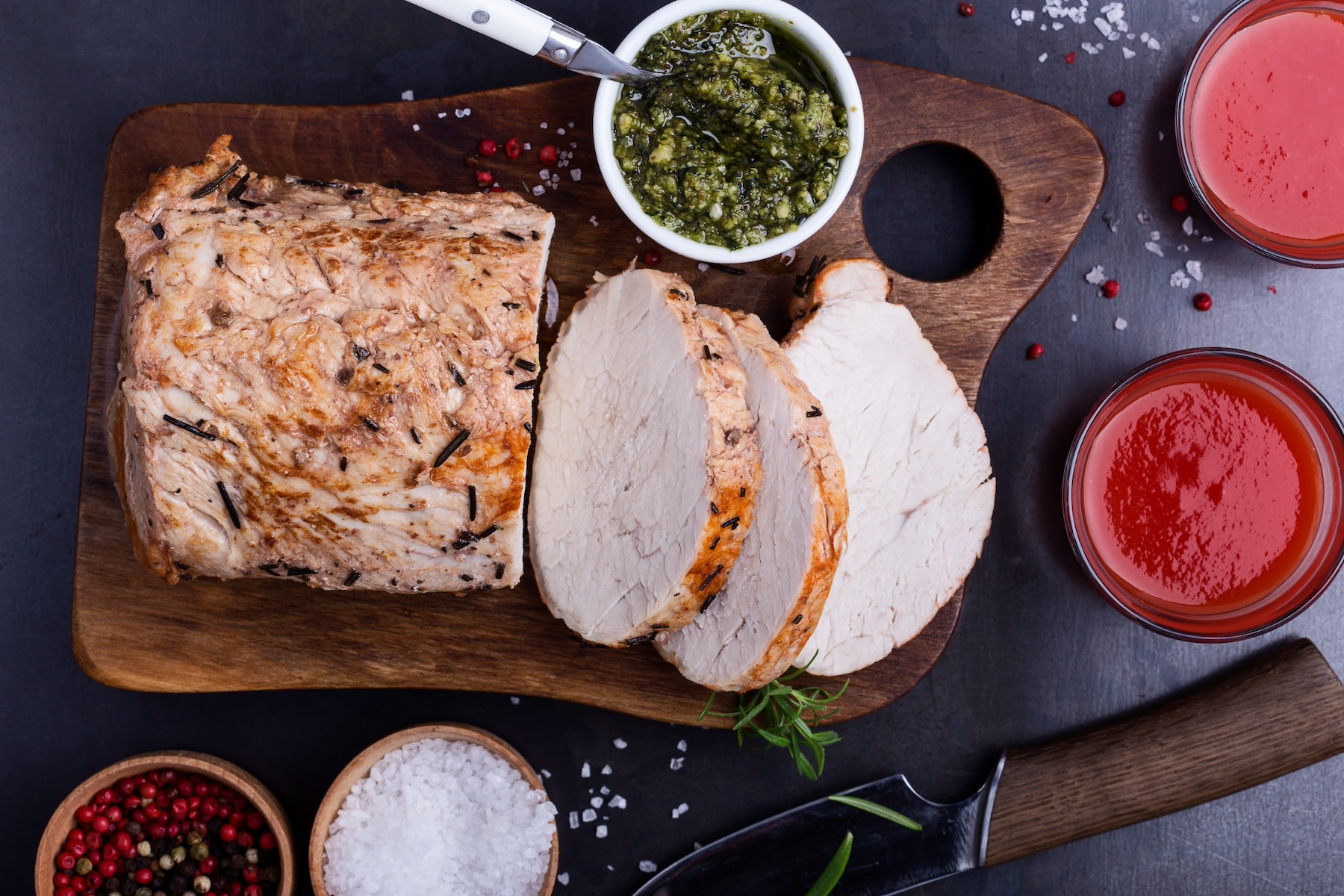
istetiana / Moment via Getty Images
Nutrition Facts (per 100 grams):
Protein: 21.6 grams
Total Fat: 3.9 grams
Saturated Fat: 0.87 grams
Cholesterol: 60 milligrams
Pork, which is technically a type of red meat, often gets a bad rap thanks in large part to cured pork products that tend to be high in saturated fat, like bacon. But there are some cuts, like pork tenderloin, that are considerably lower in saturated fat, making them a leaner choice.
According to the USDA, the leanest cuts of pork include:
Pork loin
Tenderloin
Center loin
Ham
More pros of pork tenderloin to consider: It’s richer in B vitamins than beef and it’s a fairly versatile food. For instance, White loves using pork tenderloin to make a leaner pulled pork.
5. Ground Beef, 93% Lean
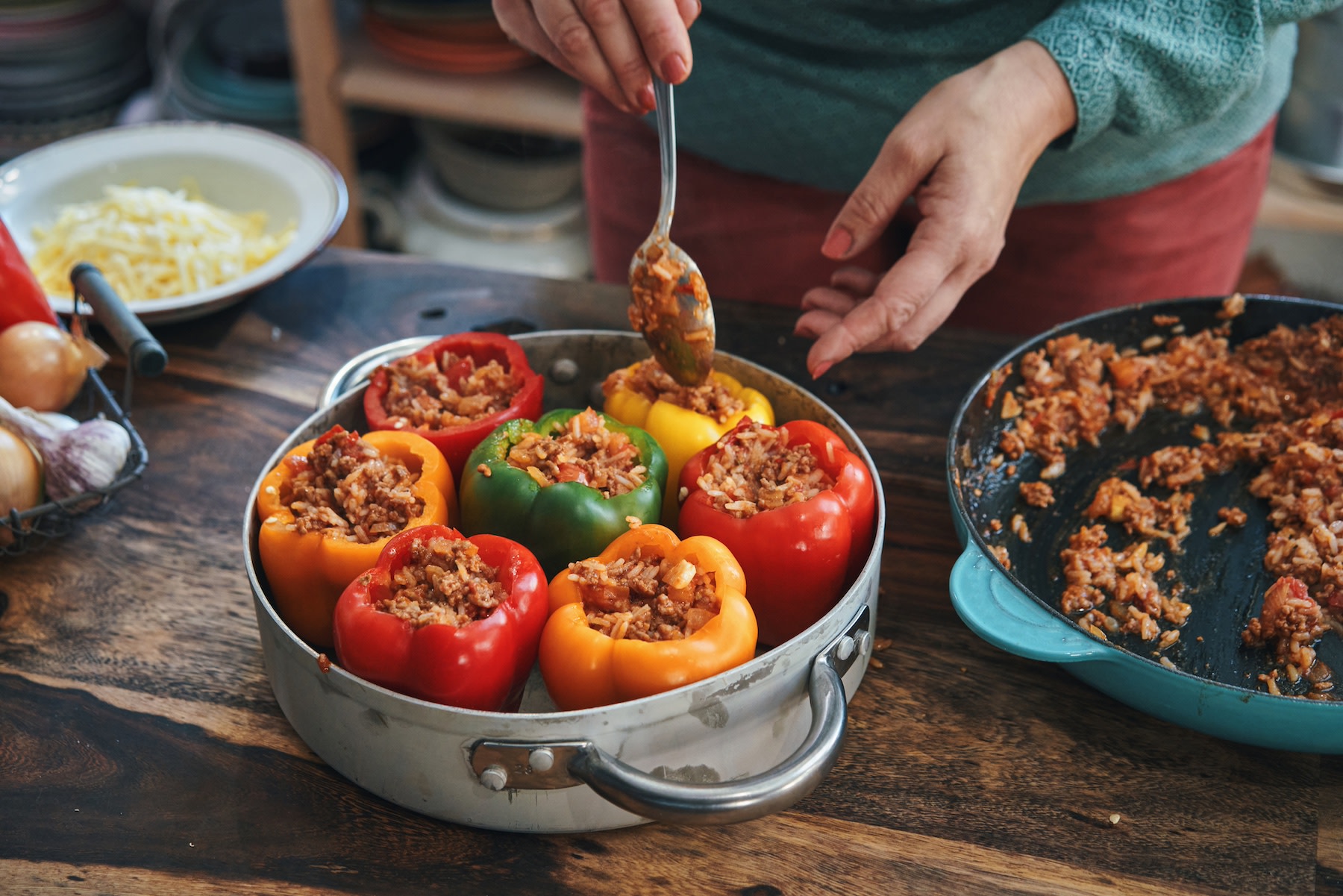
GMVozd / E+ via Getty Images
Nutrition Facts (per 100 grams):
Protein: 20.8 grams
Total Fat: 7 grams
Saturated Fat: 2.88 grams
Cholesterol: 63 milligrams
Ground beef serves as a protein-packed crowd-pleaser in tacos, burritos, stuffed bell peppers, or even on its own. Lean proteins like ground beef “can be combined with healthy spices and marinades to make full-flavored meals that are still high in protein and lower in calories,” says Quinnipiac University sports dietitian Dana Angelo White, RD. Just make sure you select an option that’s at least 90 percent lean if you’re prioritizing lean protein.
6. Ground Chicken
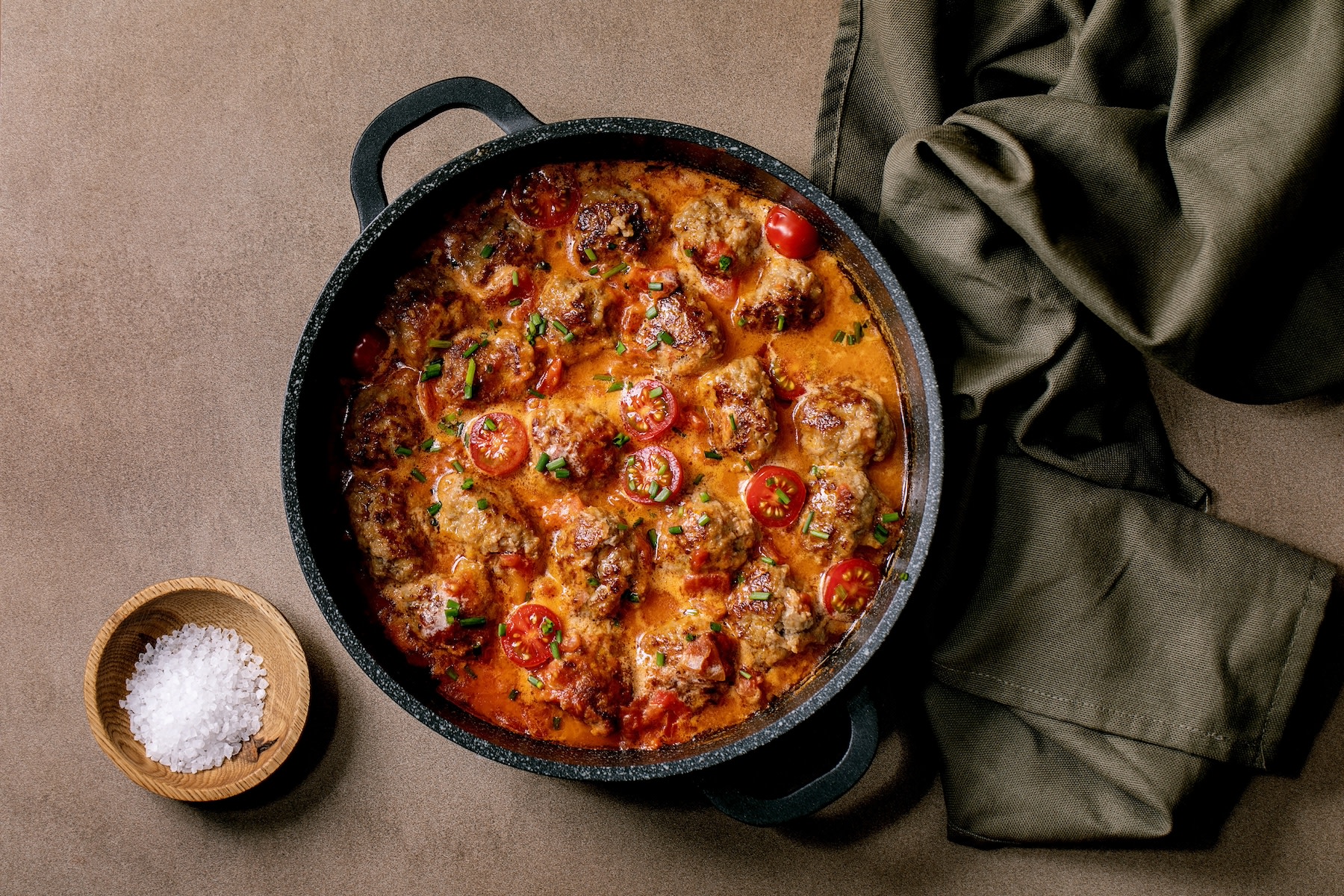
Natasha Breen / Moment via Getty Images
Nutrition Facts (per 100 grams):
Protein: 17.9 grams
Total Fat: 7.16 g
Saturated Fat: 1.56 grams
Cholesterol: 82 milligrams
Like chicken breasts, ground chicken is another high-protein option when you’re ready to mix things up. In most recipes, you can sub in ground chicken for ground beef or pork, whether that’s for meatballs, stir fry, lettuce wraps—you name it.
7. Ground Turkey, 93% Lean
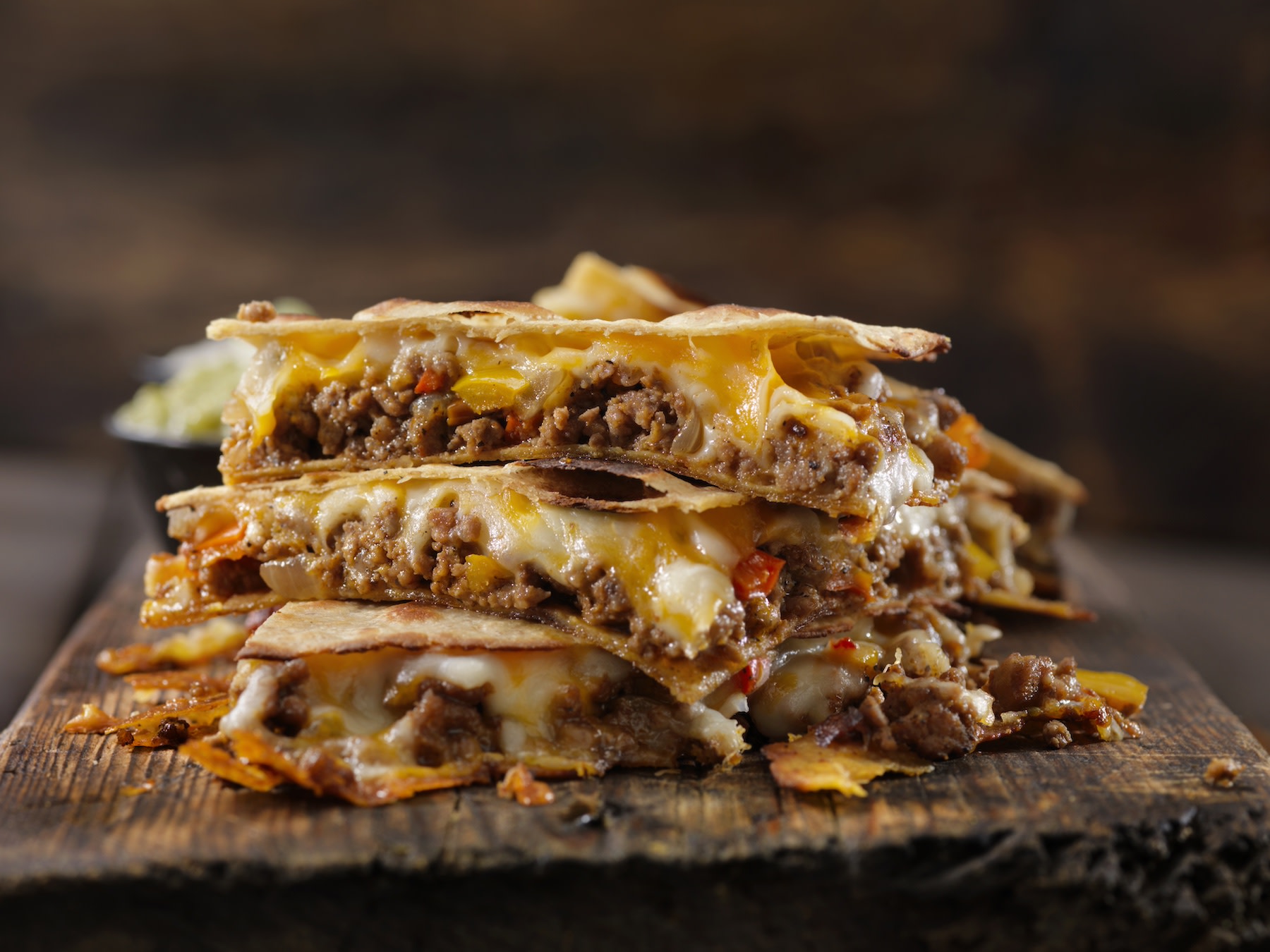
LauriPatterson / E+ via Getty Images
Nutrition Facts (per 100 grams):
Protein: 17.3 grams
Total Fat: 9.59 grams
Saturated Fat: 2.26 grams
Cholesterol: 82 milligrams
“Along with ground chicken, ground turkey is an excellent alternative to the higher-fat ground beef,” Pelitera says. “You can use it in either tacos or chili without really noticing the difference from the usual ground beef.” If you want to shake things up but are still craving something in the poultry category, lean turkey cutlets are another great choice for sandwiches.
8. Edamame
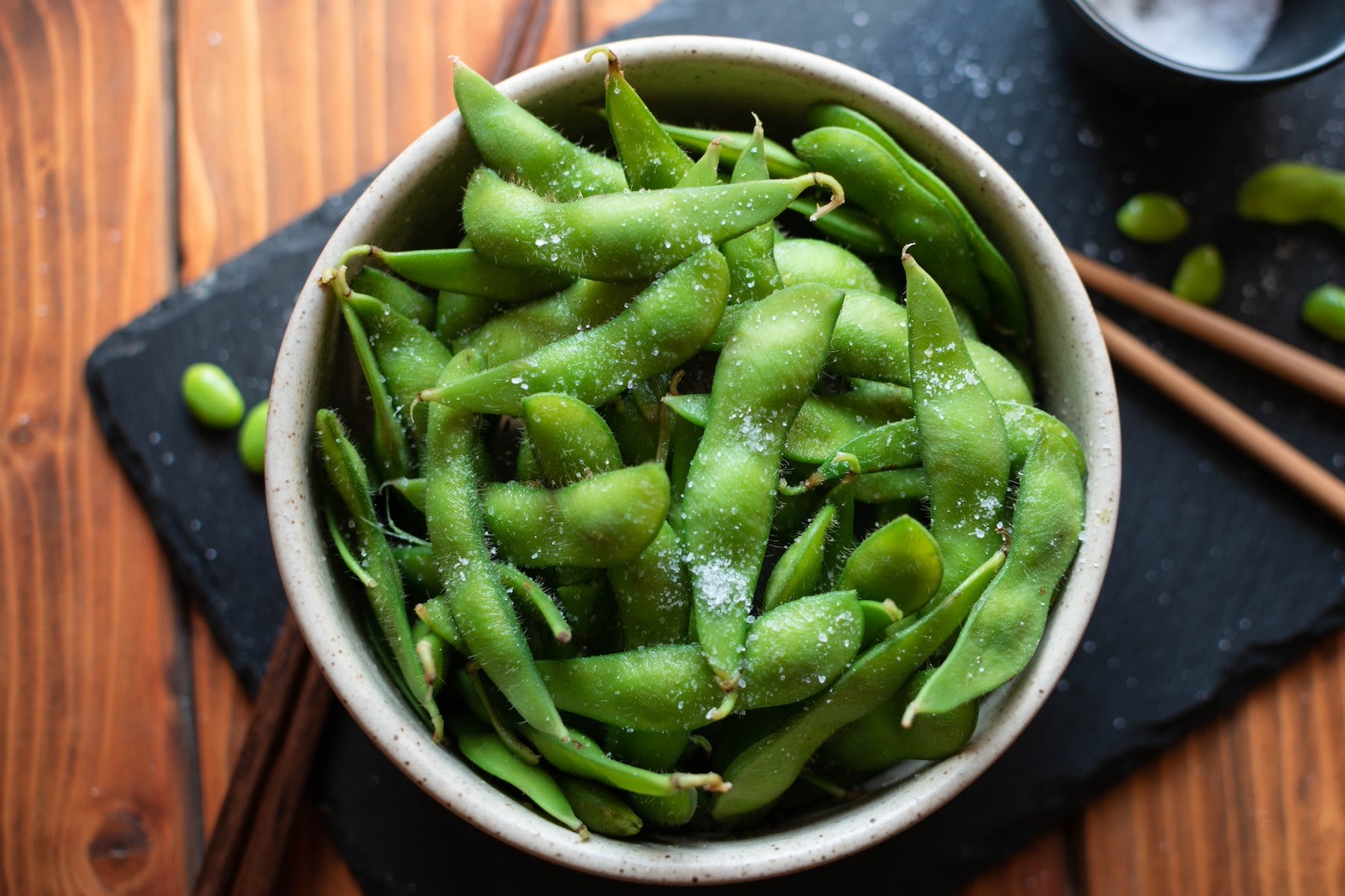
Nevena Zdravic / iStock / Getty Images Plus via Getty Images
Nutrition Facts (per 100 grams):
Protein: 11.54 grams
Total Fat: 7.57 grams
Saturated Fat: 1.32 grams
Cholesterol: 2 milligrams
Edamame is a small-but-mighty protein superstar that’s great for snacking or adding to meals. Pelitera likes dried edamame beans, in particular. “These are my favorite high-protein crunchy snack option,” she says. They come in a bunch of flavors so you can find your favorite, like ranch (Pelitera’s favorite), wasabi, buffalo, and sea salt.
Not feeling edamame? Beans and lentils are other lean sources of protein that can be eaten on their own as a snack or tossed into other dishes to enrich a meal.
9. Low-Fat Greek Yogurt
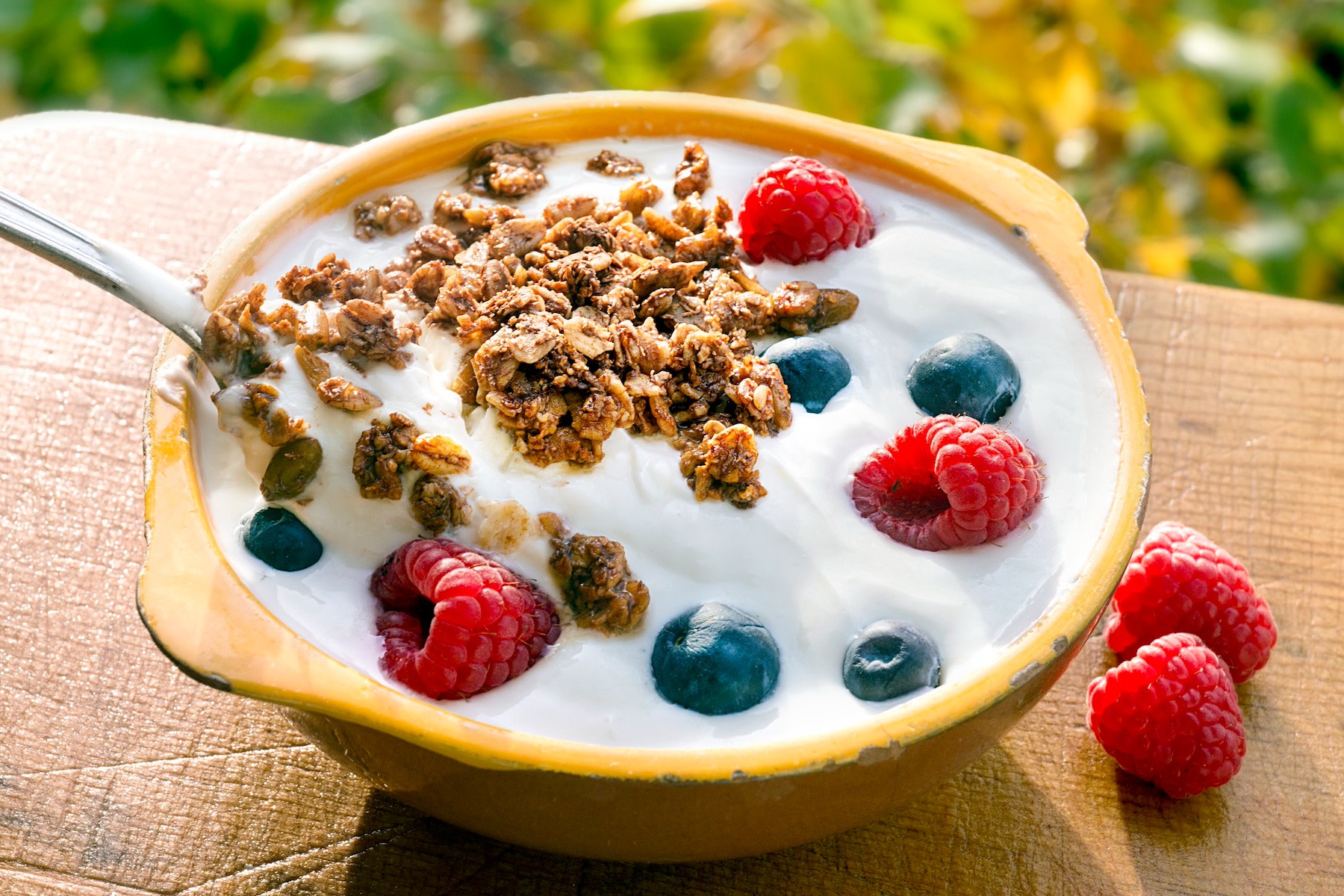
ATU Images / The Image Bank via Getty Images
Nutrition Facts (per 100 grams):
Protein: 9.95 grams
Total Fat: 1.92 grams
Saturated Fat: 1.23 grams
Cholesterol: 10 milligrams
Greek yogurt is a protein and nutrient powerhouse, Pelitera says. It’s an all-around superstar in the nutrient department, boasting high levels of calcium, probiotics, and B-vitamins. Not to mention, you can combine Greek yogurt with other foods and toppers to make it even more satisfying: “My favorite thing about yogurt is that you can add fruit and flax or chia seeds to make this a complete, nutritionally dense meal,” Pelitera says.
10. Tofu
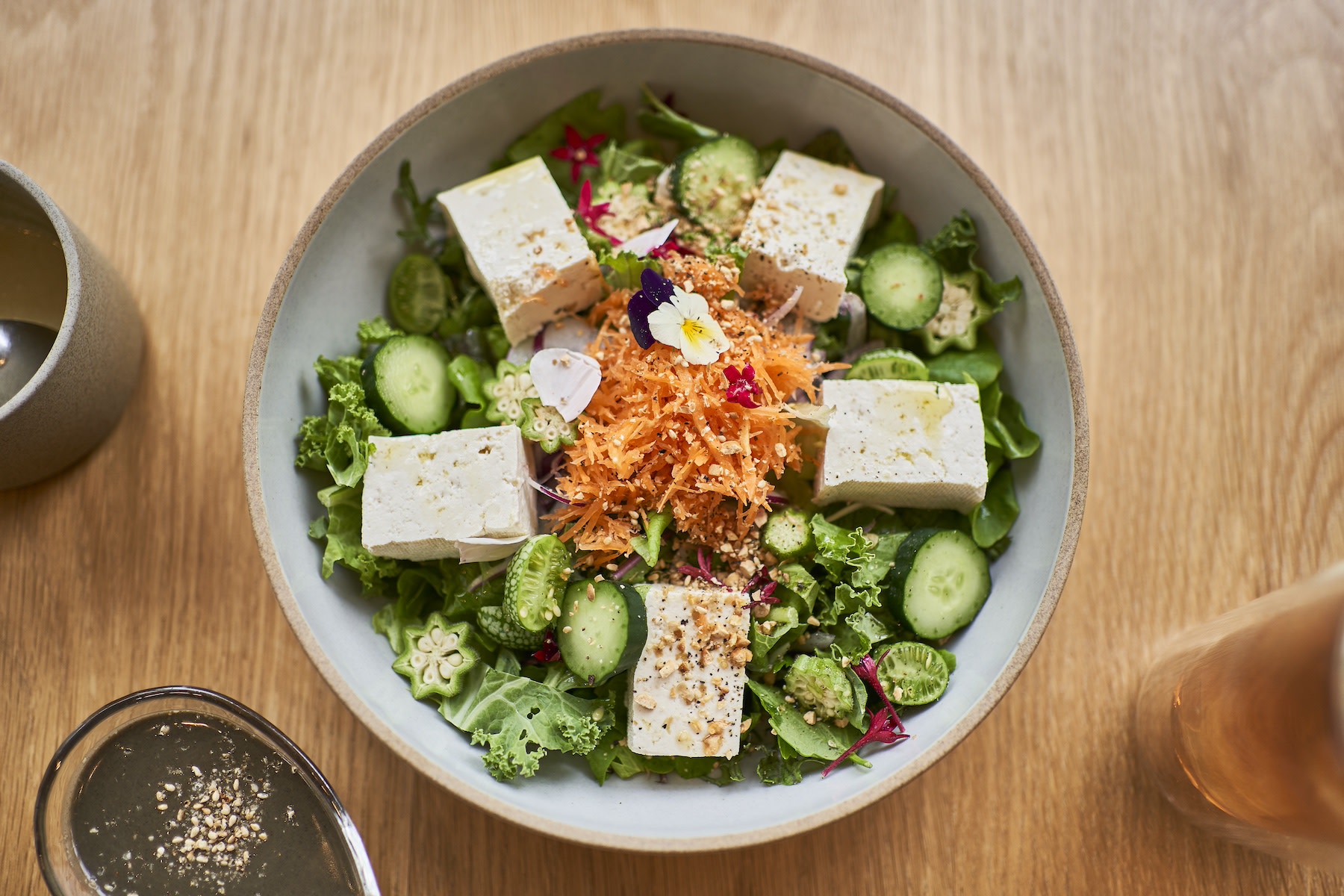
Yagi Studio / DigitalVision via Getty Images
Nutrition Facts (per 100 grams):
Protein: 8.08 grams
Total Fat: 4.78 grams
Saturated Fat: 0.69 grams
Cholesterol: 0 milligrams
Tofu is Pelitera’s favorite plant-based option for a lean protein. “I like to cook with the extra-firm tofu and season or marinate it the same way I would with a meat-based product,” she adds. It’s a favorite of White’s, too, since it’s “easy, affordable, and adds protein and fiber.”
Related Articles

Nutrition
The Difference Between Incomplete and Complete Proteins, Explained

Nutrition
The 9 Best Plant-Based Protein Sources, According to Dietitians

Nutrition
Want to Eat More Protein? Don’t Sleep On These 10 High-Protein Snacks Loved by Dietitians

Nutrition
How Much Protein Should You Eat to Gain Muscle?
Benefits of Eating Lean Protein
While protein in general is crucial for health, “adding lean protein is a wonderful way to hit your protein goals and keep your intake of unhealthy, saturated fats low,” White says. “Eating a variety of lean-protein options helps ensure you are getting the wide range of amino acids and micronutrients your body needs.”
A few other key benefits of lean protein include:
Better heart health: Leaner protein sources have less saturated fat and cholesterol than their non-lean counterparts, making them a great option for those managing high cholesterol, high blood pressure, and diabetes, Pelitera says.
Muscle maintenance: “Meeting protein goals is so important for maintaining muscle mass as we age,” Pelitera says. “Loss of muscle mass, known as sarcopenia, can limit the ability to complete everyday tasks on your own, affect bone density and bone health, and put you at greater risk for falling.”
More satiety: Protein has a higher thermic effect compared to fats and carbohydrates, meaning your body burns more calories digesting it. “A higher-protein diet will help to keep you full and satisfied with meals for hours longer,” Pelitera explains. “Adding lean protein specifically is a great way to still ensure you are getting this protein, while still managing calorie intake.”
Lower blood pressure: Lean-protein sources like fresh poultry, fish, and legumes typically contain less sodium compared to processed meats, helping to manage blood pressure.
Potentially improved heartburn and acid reflux: Research suggests that lean-protein sources may help minimize symptoms of acid reflux and heartburn compared to high-fat foods.

Peloton App
Access thousands of classes with no equipment needed.
This content is for informational and educational purposes only and does not constitute individualized advice. It is not intended to replace professional medical evaluation, diagnosis, or treatment. Seek the advice of your physician for questions you may have regarding your health or a medical condition. If you are having a medical emergency, call your physician or 911 immediately.
Get our latest health stories straight to your inbox
Enter your email to get articles, expert-backed tips, and updates from Peloton sent to your inbox.
By providing your email address, you agree to receive marketing communications from Peloton.
For more about how we use your information, see our Privacy Policy.


